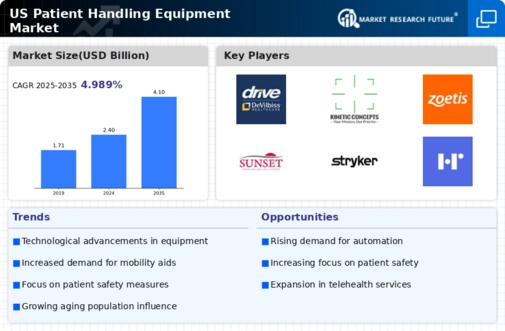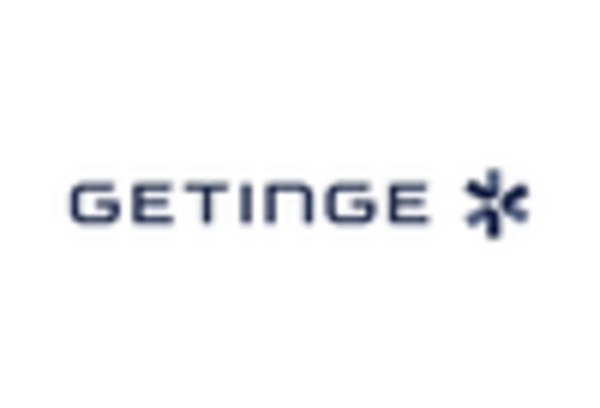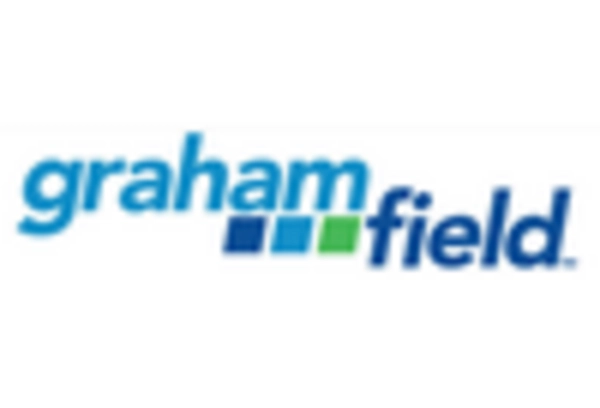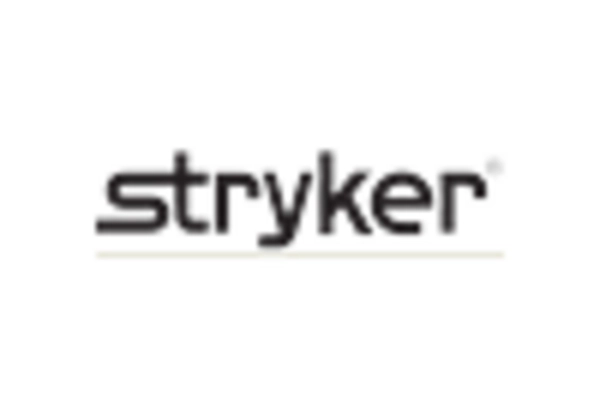Growing Awareness of Ergonomics
The patient handling-equipment market is also shaped by a heightened awareness of ergonomics within healthcare settings. Healthcare professionals are increasingly recognizing the importance of ergonomic practices to prevent injuries related to manual handling. This awareness has led to a demand for equipment designed to minimize physical strain on caregivers while ensuring patient safety. Research indicates that ergonomic patient handling solutions can reduce the incidence of musculoskeletal disorders among healthcare workers by up to 40%. As a result, healthcare facilities are investing in ergonomic equipment, which is likely to drive growth in the patient handling-equipment market as they prioritize the well-being of both patients and staff.
Rising Demand for Mobility Solutions
The patient handling-equipment market experiences a notable surge in demand for mobility solutions, driven by an increasing focus on patient comfort and safety. Healthcare facilities are increasingly investing in advanced equipment such as patient lifts and transfer aids to enhance mobility for patients with limited physical capabilities. This trend is underscored by data indicating that approximately 30% of healthcare providers in the US have reported a rise in the need for mobility solutions over the past year. The emphasis on reducing patient falls and injuries further propels this demand, as hospitals and nursing homes seek to implement safer handling practices. Consequently, the patient handling-equipment market is likely to expand as facilities prioritize investments in innovative mobility solutions to improve patient outcomes.
Expansion of Home Healthcare Services
The patient handling-equipment market is experiencing growth due to the expansion of home healthcare services. As more patients prefer receiving care in the comfort of their homes, there is an increasing need for equipment that facilitates safe patient handling in non-institutional settings. This trend is supported by data showing that the home healthcare market is projected to grow at a CAGR of 8% over the next five years. Consequently, the demand for portable and easy-to-use patient handling equipment is likely to rise, as caregivers seek solutions that enable safe transfers and mobility for patients at home. This shift towards home healthcare is expected to significantly impact the patient handling-equipment market.
Technological Integration in Healthcare
The integration of technology into healthcare practices is a pivotal driver for the patient handling-equipment market. Innovations such as smart lifts and automated transfer systems are becoming increasingly prevalent, offering enhanced safety and efficiency in patient handling. The market is witnessing a shift towards equipment that incorporates IoT capabilities, allowing for real-time monitoring and data collection. This technological advancement not only improves patient safety but also aids healthcare providers in tracking equipment usage and maintenance needs. As hospitals and care facilities adopt these advanced technologies, the patient handling-equipment market is expected to grow, reflecting a broader trend towards digital transformation in healthcare.
Increased Focus on Healthcare Efficiency
The patient handling-equipment market is significantly influenced by the growing emphasis on healthcare efficiency. As healthcare costs continue to rise, facilities are compelled to optimize their operations, leading to a greater reliance on efficient patient handling equipment. Studies suggest that hospitals that implement advanced handling solutions can reduce patient transfer times by up to 25%, thereby enhancing overall workflow. This efficiency not only improves patient satisfaction but also allows healthcare providers to allocate resources more effectively. The trend towards value-based care further reinforces the need for efficient patient handling solutions, as providers aim to deliver high-quality care while managing costs. Thus, the patient handling-equipment market is poised for growth as healthcare facilities seek to enhance operational efficiency.

















Leave a Comment